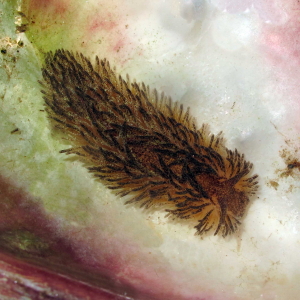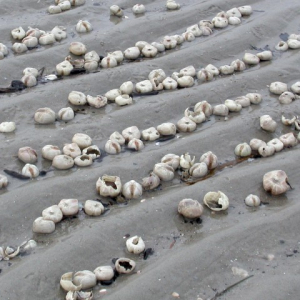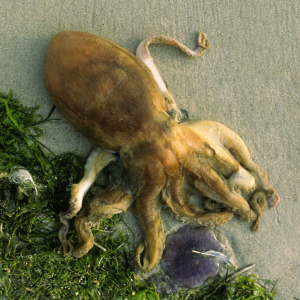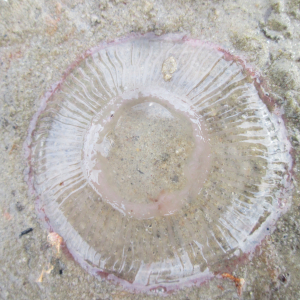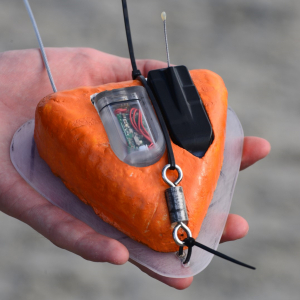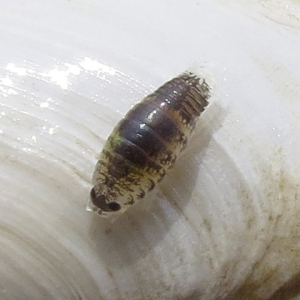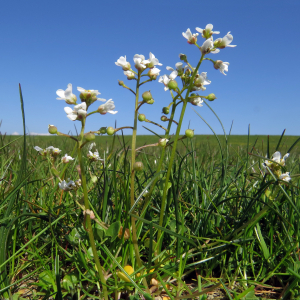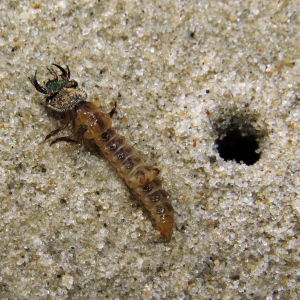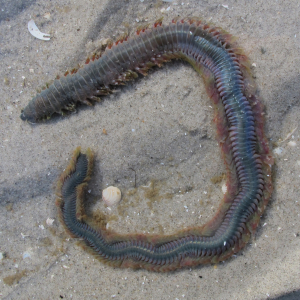
News
In some years starting from march strange fuzzy animals can be found at mussel beds or washed ashore. They are 4 - 10 cms long and have a smooth foot underneath the whole body which marks them as slugs. The head bears four tentacles, the back is covered in dozens of fringes. They harbour gut appendices which store nettle cells that origin from the prey of the Anemone slug: Plumose anemones and Mud sagartias. The Anemone slug occurs in different colour variations, is adult in spring an lays spiralled gelatinous egg strings.
When sea temperatures fall in winter, masses of heart urchins have to pay the debt of nature. Especially along sandy coasts where numerous urchins have colonized the seabed during summer hundreds or thousands of these fragile shells are washed ashore. Usually they have lost all spines and often the shells are broken. Looking from above this shell looks slightly heart-shaped, hence the name of this burrowing echinoderm. Underneath the globular body is the mouth opening. Nutrituous soil particles are consumed while the heart urchin digs its way below ground at a depth of about 10 cms - filling the ecological niche of earthworms on land.
November is the time when large fishes or other rare marine creatures tend to strand on beaches. Among them were several Lesser octopuses this year. But sun- or swordfish also tend to be found in november. The sinking sea temperature causes the stranding of cold sensitive species that have entered the North Sea during summer. Already during the 1970s the Lesser octopus was temporarily present in the Wadden Sea. It is not a "southern" but a cold senisitve species. The shallow Wadden Sea cools faster down than the deeper North Sea - a natural factot excluding sensitive species. Time to look for rare finds on the beach!
Early spring is the right time to look out for Crystal jellies. This jelly fish with characteristic lines on its umbrella has never been found north of the Elbe estuary. May be this year? But reports from western and eastern Frisia are also surprisingly rare as the species is regularily reported from Spiekeroog in september. Watch out for it!
In a few days three transmitters of this type should be washed ashore in the WaddenSea. On october 15th they have detached themselves from the back of harbour seals on which they had been fixed be researchers of the veterinary highschool of Hannover. The devices recorded during ten days 800 times per second(!) the seal's movements to help analyse their hunting strategies at sea. In case you come across one of these transmitters please contact immediately: abbo.van.neer@tiho-hannover.de
In summer it may happen that tourists get "stung" while bathing in shallow waters of the North Sea. The stings do not itch and the moderate pais eases quickly. The culprit is the sea louse, a 5 mm long marine isopod searching for food in the surf zone. The small animal bites anything that seems digestable - including bathers. Its scinetific name translates as "beautyful Eurydice" and is derived from the greek myth of Eurydice, who sank back into underworld - just like the small isopod which sinks exhausted back to the seafloor after quick circling swims at the surface.
The first saltmarsh flowers - starting in mid-may - belong to scurvy grass. Its cross-shaped white flowers are easy to find and can form dense white tufts with a distinct scent of honey. Less easy is the distinction between our three indigenous species: The Long-leaved s-g has flattend oval seed pods wich are as long as their stalks. In Common s-g the fruits are globlar and three times shorter than their stalks. The Danish s-g grows in dunes and along roadsides and has flowered in april already. All three herbs were pickled and used as "vitamin pills" during whaling trips to the arctic.
Despite the cool april weather most beach insects have returned from their hibernation dens. At many beaches the digging tracks of the Beach Bledius can be seen as small lines of dug-up sand. Somewhere below it the 3 mm long beetle is in search of microscopic algae, its food. Much more spectacular is the pictured larva of the Dune tiger beetle. With its huge mandibles it preys on other insects. The vertical burrow with a circular opening can be found on beaches at the foot of the dunes. Digging up the larva is difficult and needs some luck.
On the first full moon night after the coastal waters have reached 6° C a unique spring event happens. Within one single night thousands of male King rags ascend to the sea surface to perform wild circling dances. The capital worms of up to 40 cms length excrete a quarter of their body mass as sperms into the water column. At the break of dawn they are exhausted and fall victim to fishes and birds o rare washed ashore dying. Some worms came up to mate already at new moon but the others will swarm on 11th/12th of april.




